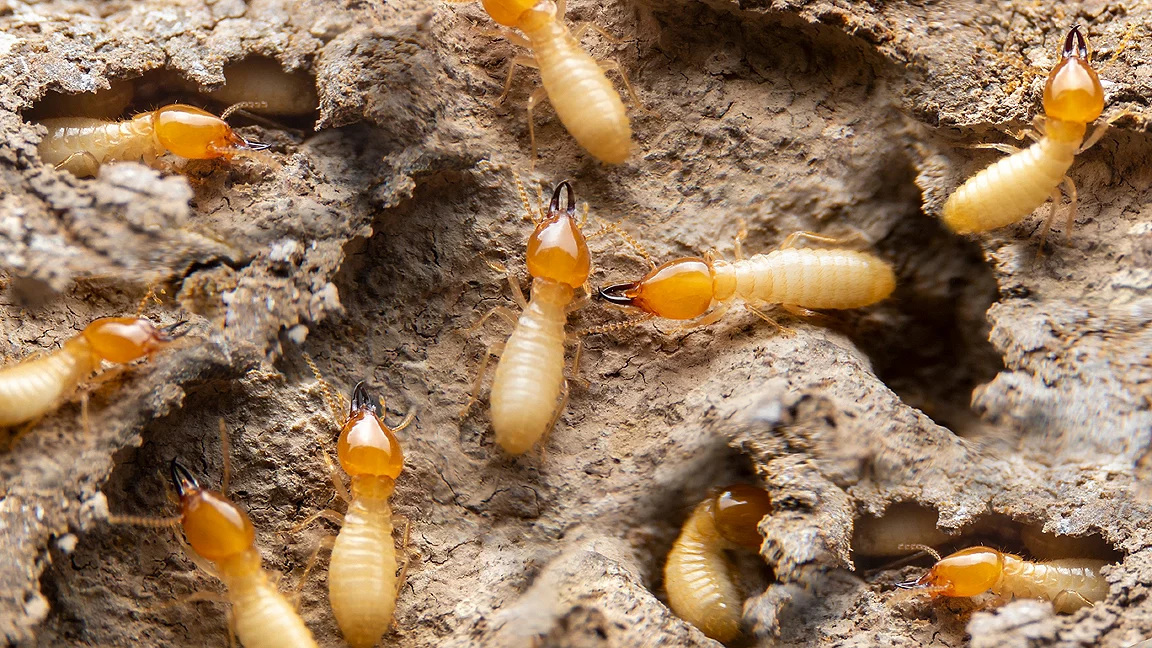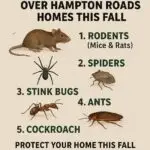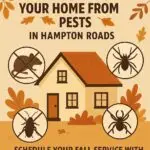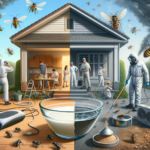
Termites are often called “silent destroyers” because they can cause significant damage to your home without showing obvious signs right away. Early detection of a termite infestation is crucial for minimizing structural damage and repair costs. This guide will help you identify the early signs of a termite infestation so you can take prompt action and protect your property.
Why Termite Infestations Are Dangerous
“dangers of termite infestations”
Termites feed on cellulose, which is found in wood and other plant-based materials. As they consume the wood in your home, they weaken its structure, compromising the integrity of your walls, floors, and foundation. Left untreated, termite damage can result in thousands of dollars in repair costs and, in extreme cases, make your home unsafe to live in.
Common Signs of Termite Infestation
“early signs of termite infestation”
Termites are stealthy and tend to avoid open spaces, making them difficult to detect. However, by recognizing the following signs, you can identify an infestation early and seek professional pest control services before the damage becomes severe.
1. Mud Tubes on Walls or Foundations
“mud tubes from termites”
One of the most common signs of a termite infestation is the appearance of mud tubes on your walls or foundation. These pencil-sized tunnels are built by subterranean termites to protect themselves from predators and maintain moisture levels as they travel between their colony and food sources. Mud tubes are usually found along the exterior foundation of homes, but they can also appear inside, near walls or support beams.
2. Hollow-Sounding Wood
“hollow wood termite damage”
Termites eat wood from the inside out, which means that your home’s structural beams, flooring, or walls may look intact on the surface but could be hollow underneath. To check for this, tap or knock on wooden structures in your home. If the wood sounds hollow, it could be a sign of internal termite damage.
3. Termite Droppings (Frass)
“termite droppings”
Termite droppings, also known as frass, are a key sign of a drywood termite infestation. These pests push their droppings out of their tunnels, leaving small, pellet-like frass near window sills, door frames, or wooden surfaces. Frass often resembles sawdust or coffee grounds and is typically found in small piles near termite activity.
4. Discarded Wings
“discarded termite wings”
When termites swarm to establish new colonies, they shed their wings. If you notice piles of discarded wings around windows, doors, or light sources, it’s a strong indicator that termites have entered your home. Termite wings are often confused with ant wings, but termite wings are uniform in size, while ant wings are different lengths.
5. Warped or Bubbling Paint
“paint damage from termites”
Warped or bubbling paint on walls, ceilings, or wood surfaces can be another sign of a termite infestation. This happens when termites build their tunnels close to the surface, causing moisture to accumulate under the paint. While bubbling or peeling paint can also be caused by water damage, it’s worth investigating for termite activity if other signs are present.
6. Tight-Fitting Doors and Windows
“termite-caused window and door issues”
As termites consume wood, the moisture they produce can cause the wood to warp or swell. If your doors and windows suddenly become difficult to open or close, or if they feel stuck, this could be due to termite damage.
7. Visible Termite Swarmers
“termite swarmers”
Termite swarmers are winged reproductive termites that leave their colonies in search of new locations to establish nests. If you see flying termites or groups of termites around your home—especially in the spring or after rain—it’s a strong sign that termites may be infesting your property.
8. Clicking Sounds from Walls
“clicking sounds from termites”
Termites are surprisingly noisy pests. If you listen closely, you may hear clicking sounds coming from your walls, especially at night. Soldier termites bang their heads against the wood to signal danger to the colony, and worker termites make faint rustling noises as they chew through wood.
What to Do If You Suspect a Termite Infestation
“what to do about termite infestation”
If you notice any of the signs listed above, it’s important to act quickly to prevent further damage. Here’s what you can do:
- Contact a Professional: Termite infestations require expert treatment. A professional pest control company can conduct a thorough inspection and recommend the best treatment plan.
- Limit Moisture: Termites are attracted to moisture, so fix any leaks in your home and eliminate standing water near your foundation.
- Seal Cracks: Close off any cracks or gaps in your foundation, walls, or around windows and doors to block entry points for termites.
- Move Wood Away: Keep firewood, lumber, or other wood products away from your home, as these can attract termites.
Conclusion: Early Detection Is Key
Termites may be small, but the damage they can cause to your home is significant. By staying vigilant and watching for the early signs of a termite infestation, you can protect your property and avoid costly repairs. Regular inspections and professional pest control services are the best way to safeguard your home against these destructive pests.
At Adibug, we specialize in termite prevention and control, offering comprehensive termite inspection and treatment plans to protect your home. Don’t wait until it’s too late—contact us today for a termite inspection.
Website: Adibug.com
Phone number: 7578520085







